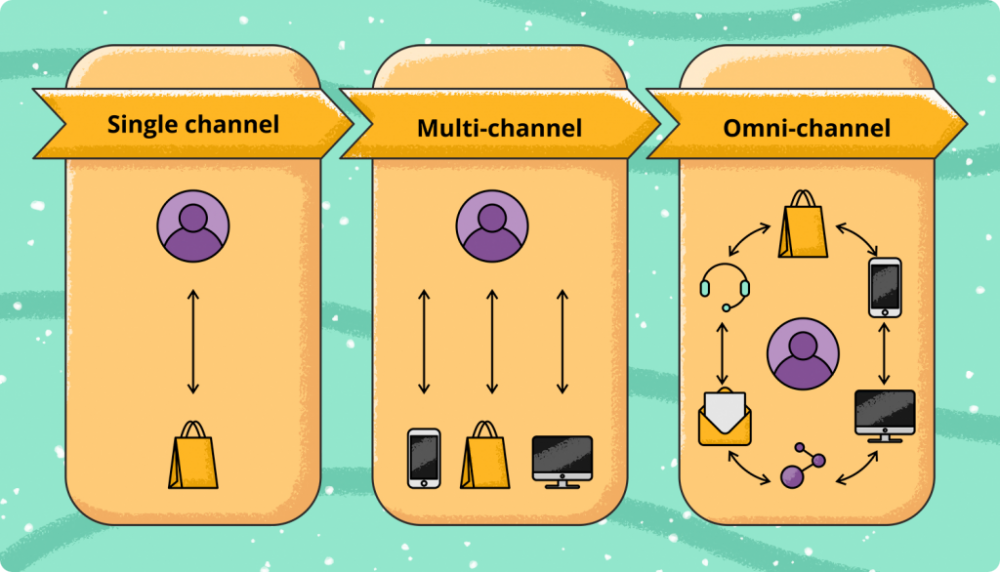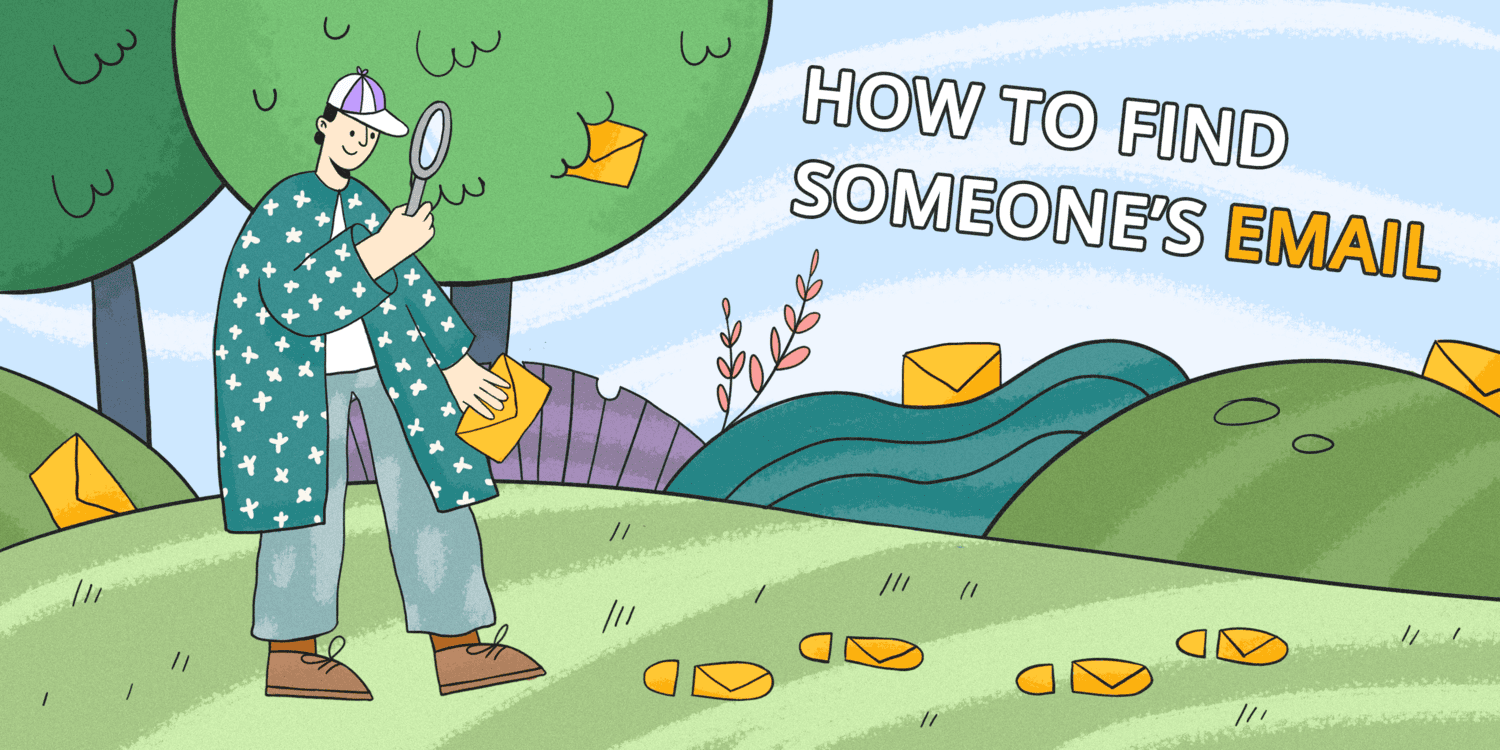Ensuring a steady flow of quality leads into the sales funnel is one of the biggest challenges companies face nowadays. To keep their sales cycle moving, many businesses have adopted outbound prospecting as their primary growth strategy.
In this article, we’ll talk about an outbound sales strategy and why it is crucial for your success. You’ll also learn a step-by-step process for sales prospecting, along with some tips for improving your business results.
What is outbound prospecting?
Outbound prospecting is a proactive sales approach where companies initiate contact with targeted leads yet to express interest. It’s the process in which sales representatives research, identify, and reach out to prospects to convert them into customers.
The most popular outreach strategies for outbound prospecting are cold emailing and cold calling. However, reaching out to potential clients via LinkedIn or any other direct method also falls under this category.
Outbound sales are an excellent way for B2B companies to expand their customer base. Any business struggling to close more deals can land better opportunities through cold prospecting.
What are the benefits of outbound prospecting?
Generate better quality leads
Outbound prospecting is the perfect way for businesses to attract high-quality prospects to the sales funnel. By actively going after targeted clients, sales reps can strike up better conversations that result in real opportunities in the end.
A critical step in your outbound sales strategy is understanding ideal clients by identifying their needs and challenges. Instead of reaching out to people randomly, the sales team will know who they’re after from the start and how they should initiate contact.
When done right, outbound sales can result in a smoother sales process with many qualified leads with a high chance of converting.

Increase sales and revenue
Boosting sales and revenue — especially in the short term — has been and always will be a significant challenge in the way of growth for lots of companies. That’s especially true for startups and struggling businesses trying to launch new products and services.
The advantage of outbound prospecting is that it enables you to take matters into your own hands. Instead of waiting for new prospects to enter your sales pipeline magically, you deliberately introduce them to your offers and show them why they need your help.
That’s why cold prospecting has been the top go-to-market strategy for many B2B companies aiming to close more deals.
Shorten the sales cycle
Another big issue facing organizations in many industries is unnecessarily long sales cycles. Not only do those affect everyone’s productivity, but they also leave space for competitors to lead the way and dominate the market.

Outbound prospecting is a guaranteed way to streamline your work process and shorten the sales cycle. By constantly interacting with prospects and explaining to them why closing the deal sooner is crucial, you’ll be able to establish a sense of urgency that results in a faster sales process.
With outbound sales, you’ll also better understand your target clients, which is crucial for minimizing sales friction and anticipating any potential declines before they arise.
Difference between outbound and inbound prospecting

Both outbound and inbound prospecting can be excellent growth strategies for your company. If implemented right, your business will attract a lot of quality clients and grow faster. But even though the result is the same, there are many differences between the two techniques when it comes to execution.
First of all, inbound and outbound prospecting are different by definition.
Inbound sales apply different marketing strategies to attract prospects already interested in what you’re offering. So instead of reaching out to them, these leads will contact you directly or sign up for your newsletter to learn more about your business.
On the flip side, outbound prospecting is more of an active process where salespeople seek out potential customers. Most of the time, these cold leads don’t even know that there is a solution to their biggest problem.
Second, inbound sales are mainly the marketing department’s responsibility — whereas the sales team handles outbound prospecting.
The marketing team will create informational content around specific topics to boost brand awareness, which helps attract a lot of quality leads that are easier to talk to and convert.
With outbound prospecting, companies have to focus on targeted decision-makers matching their ideal customer profile (ICP). Once identified, salespeople will quickly initiate the outreach process, which explains how this approach can result in a shorter sales cycle.
Third, the two strategies also differ in terms of which types of companies should use them. Inbound sales work best for established companies seeking long-term growth in the industry.
On the contrary, outbound prospecting is best fit for:
- Startups and new organizations that have to get clients fast
- Corporations looking to expand into new markets
- Companies introducing new products or services
How to implement an outbound sales strategy to attract better clients
Step 1. Define and research your ideal clients
The only way to be efficient with outbound prospecting is first to research and identify your target clients. A cold prospect who knows nothing about your company will only respond to you if they can see some value in your offering.
By developing an ICP, you’ll be able to personalize your outreach and tailor your offered solutions to the right prospects. That, in turn, is going to increase your response rate and help you close more opportunities in less time.
To best understand your ideal customers, you must first analyze your existing customer base. A closer look at current clients will provide you with much insight into demographical data and psychographic traits.
Some of the characteristics you might want to consider in your ICP are:
- Industry segment
- Location
- Size and budget of the company
- Period of business existence
- Details about decision-makers
- Needs and pain points
| Ideal customer profile template | ||
| Factors | Example | Your ICP |
| Industry | B2B SaaS | |
| Location | USA, China, Canada | |
| Size | 50-10 employees | |
| Growth level | Startup | |
| Budget | $500-1500K | |
| Business objectives | -To grow their customer base 50% each coming year -To become the top web design service in 4 years |
|
| Pain points | -They don’t have a systematic approach to all business processes -Cold email outreach has a low reply rate -They have a relatively low brand awareness -Marketing and sales are not aligned |
|
| Decision-making factors | -They make decisions based on facts, testimonials, case studies -The decision-making is made by a team of top managers, not just by the CEO |
|
| Channels for outreach | LinkedIn, email | |
Each data point can significantly impact your sales performance with outbound prospecting. For example, specifying the job position allows you to focus on managers and key decision-makers in your target company. That is crucial for avoiding gatekeepers and shortening the sales cycle.
Step 2. Find quality leads through prospecting
Now that you identified who you’re targeting in your outreach, you need to build a list of potential customers for your sales reps to work with.
There are many prospecting techniques you can implement to find high-quality leads with their contact information. For example, using LinkedIn Sales Navigator is one of the popular options. LinkedIn has more than 800 million users and offers a wide range of options for finding your target audience. Just imagine, there are 58 million companies there, which means that this is where hundreds of your potential customers live.
Another way to go about this is to use prospecting tools for building an impressive list of your own. Lead generation platforms can offer you large-scale databases with verified contact information to help you create a lead list that matches your ICP.
Struggling to find the email addresses of your leads?
Snov.io is a sales toolbox that offers email finding and verification tools that enable you to reach every prospect on your list. The platform also offers a CRM system for managing all leads in one place — a great way to streamline your sales funnel and narrow your focus on the right leads.
Step 3. Reach out to prospects via relevant channels
Despite being some of the oldest tricks in the book, email and phone calls are still among the best strategies for outbound prospecting today. Add to that LinkedIn outreach via InMail messages, which also helps stand out and make a lasting impression on any potential client.
With verified contact details in your lead list, you can reach out to prospective clients with relevant messages.
At such an early stage in the sales process, your goal shouldn’t be to close deals but to gain trust and establish authority. So instead of selling your offers and services, you need to engage leads by providing them with value upfront and answering all their questions.
As soon as you become your prospect’s primary source of information in the industry, closing the deal will no longer be a challenge. All you have to do at this point is promote helpful solutions based on the specific needs of each lead.
Best tips for improving your sales results with outbound prospecting
Tip #1. Personalize your cold outreach messages
As already mentioned, personalizing your sales messages allows you to build a solid connection with each prospect and get them interested in your offering. As a result, your sales reps will be much more successful in converting new leads and closing sales faster.
Effective outreach personalization starts with identifying target clients and collecting enough data about them. You’ve already done that when building your lead list, so now it’s all about using that information to craft tailored sales messages.
Depending on what you know about each lead, there are many ways to personalize your outreach. In the first interaction, it’s essential to at least include the prospect/company name and a personalized first line to grab their attention.
As you move forward with the conversation, you can be more creative in tailoring your communications. For example, you can engage new leads by:
- Asking intriguing questions to increase response rates and keep the conversation going
- Sharing informational content pieces that help you stand out as a subject matter expert
- Promoting specific offers relevant to the needs and challenges of each prospect
Tip #2. Use an omnichannel approach in your outreach
An omnichannel strategy in sales refers to using multiple outreach channels and platforms to connect with potential clients. This allows you to provide a continuous sales experience to your prospects across different touch points.
For example, a company may initiate contact with a target customer via email and follow up through other channels such as phone calls, SMS, or LinkedIn.

The benefits of using an omnichannel approach in your outbound sales strategy are indisputable. Communication with prospects through different channels at once boosts engagements and guarantees a smoother customer experience.
Also, this approach is a great way to stay top-of-mind for your potential clients and maintain high response rates even with the busiest prospects on your list.
Tip #3. Follow up with prospects consistently
There are dozens of reasons for a prospect not to respond to your outreach messages. They may ignore your email or call simply because they don’t know who you are. Or perhaps they expect you to be an annoying salesperson who will waste their time. More possibly, they might be just too busy handling crucial tasks in their business.
Your engagement rates will be pretty low in the first outreach attempt. But even when you get an initial response, some leads may just go cold and not reply to you anymore.
What should you do in this case?
Follow up consistently with tailored messages that push the conversation forward.
An omnichannel approach when following up is an excellent way to improve your outbound prospecting results. It allows you to meet prospects where they are, so you can minimize the chance of having your messages ignored.
Now, while it’s crucial to reach out constantly to your target leads, you need to ensure you’re not being too pushy. You must always space out your follow-up attempts by a few days to avoid annoying your potential clients.
In summary
Outbound prospecting may be the missing piece in your sales growth strategy. It’s a highly-efficient technique for attracting qualified customers and selling to them fast.
Your outbound sales strategy can be broken down into a few simple steps:
- Identifying ideal clients
- Building a targeted lead list
- Contacting those prospects via different outreach channels
There are endless ways to improve your results with outbound prospecting. For instance, you must constantly personalize your messages to appeal to specific prospects. Also, you must adopt an omnichannel approach in your outreach and follow up repeatedly to keep potential clients engaged.





